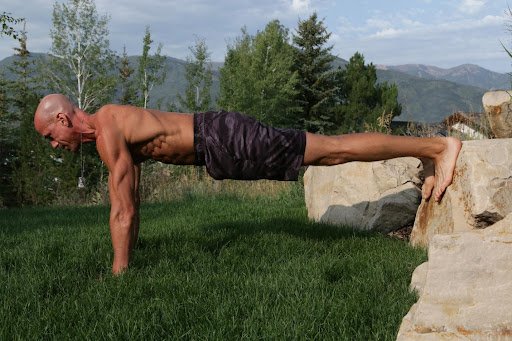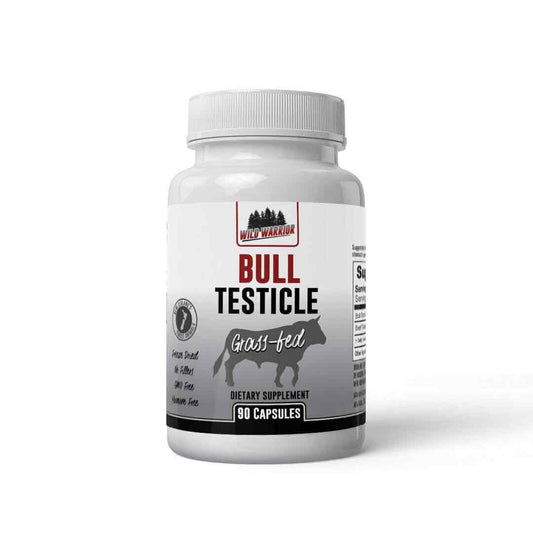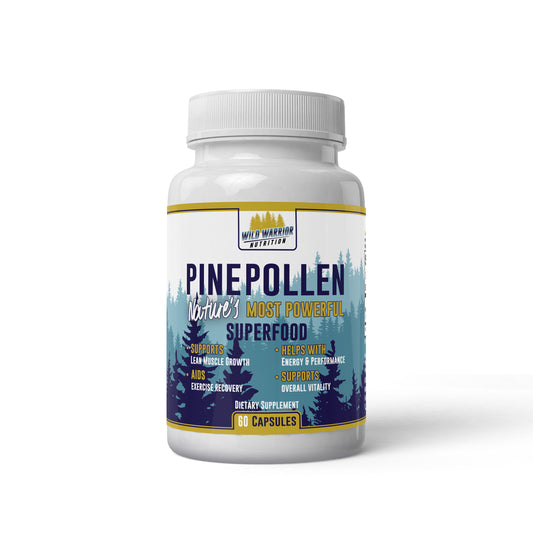You might be asking yourself, how on earth am I going to get a bigger chest without any equipment? That’s a really easy answer, actually—by doing push-ups. But there are several factors involved that you have to pay strict attention to. Just plopping down on the floor. knocking out a bunch of push-ups isn’t going to get you there.
You have to know how to do them correctly, what kind of volume you should aim for, how often you should do them and what variations to perform. The good news is, I’m about to uncover all of this in the paragraphs to come. So make yourself comfortable, grab yourself a kombucha and let’s get ready for action.
Push up Form
The first thing that should come to mind when it comes to building muscle and definition is time under tension. To be more specific, your muscles adapt best to growth when they endure an extended amount of time where they are being “tensed.” That is where the principle of time under tension comes from.
Performing a number of horribly fast sets of push-ups at a high volume is NOT an example of time under tension. In this case, your chest muscles, known as the pectorals, get very little tension. You can expect little to no results in this case.
Your focus should be around slow and controlled reps that are greasy smooth and graceful. Additionally, there is no need to have your body and hands in the wrong place. In other words, execute proper form.
Place your hands directly under your shoulders, keep your abs tight and form a straight line from the back of your head to your heels. Slowly lower yourself down by bending your elbows and stop when your chest or chin touches the ground.
Push yourself up in a smooth motion and repeat. Never let your butt sag or elevate and make sure to take a big inhale on your way down and exhale as you come up. That is the basis of a good, classical, quality push-up. Commit that to memory comrade and apply it to every push-up you do the rest of your life!
Volume
A lot of purists swear by the “3 sets of 10” principle. It’s true that you can get results with a training volume of this magnitude, but I’ve never been known to think inside the box. If I was to be completely honest with you, I’d call this the minimum effective dose (MED).
Sure, you can build some baseline strength and maybe a little definition, but 3 sets of 10 to me is like a small appetizer that won’t come close to filling me at the dinner table. If you’re really trying to pack on some size and definition through the medium of push-ups, then you should focus on more volume.
There was one time when I did an experiment and performed a set of 10 reps of push-ups every 15 minutes from the time I woke up until the time I went to bed. I ended up doing well over 600 reps that day.
Don’t get me wrong. I don’t advise you to follow a strategy as crazy as that. But I do think you need a good 5 sets or more to really feel the “bang!” And I’d aim for 8 to 12 reps with each set. Just make sure to do them slowly and under complete control, instead of fast and choppy. Remember the time under tension principle.
Frequency
There are certain exercises that you can do every day and you won’t have to worry about overtraining or overuse injuries. Push-ups can normally qualify as one of them. However, not in this case. You are trying to max out and leave nothing on the table at the end of your chest beefcake sessions here.
For that reason, it is advisable to let your chest rest for a good 48 hours before your next workout. So if you did a push-up workout on Monday, don’t do another one until at least Wednesday.
And if you are still sore come Wednesday, then push it to Thursday. There is nothing wrong with dropping the ego and giving your pectorals the time they need to recover. In fact, it’s during your down time that your chest will grow the most.
Areas of Interest
OK, you know how to do push-ups correctly and you also know about the volume and frequency. But here’s another major part of bulking up the chest with push-ups. You should do them with your body at multiple angles. This ensures that you are targeting all sections of your chest to maximize growth; especially when you are just doing push-ups.
What does this look like? Well, at bare minimum, you want to do them with your hands on an elevated object, your hands and feet on the ground and your feet on an elevated object. This will place focus on the upper, middle and lower parts of the pecs. Additionally, you can place your hands on an object like a medicine ball to target the inner part of the chest to go after that nice, serrated look.
Workout Example
You caught me at the right time because I’m feeling very generous today. I’m going to describe a whole chest workout for you that can be done anywhere you have the space and time to do it. This is going to involve some supersets, which are performed back-to-back with no rest.
If you don’t have the strength or stamina yet to do supersets, then perform these drills in a vertical column with rest breaks in between. Then start from the top and repeat.
Superset Protocol
Decline Push-ups with feet on object. The object does not matter. Your body doesn’t know the difference between a chair, mantle or stack of crates. Simply place your feet on an object of choice, place your hands on the ground and do your push-ups with correct form.
Classical push-ups on the ground. You already learned about these above.
Incline push-ups with hands on object. Simply place your hands on the object and feet on the ground. Follow the same rules with the decline and classical push-ups, and you’ll be good to go.
Close-grip push-ups with hands on a medicine ball. The idea here is to keep your hands closer together. By using a medicine ball, you can wrap your hands around the sides of the ball, which places a really nice “squeeze” on your inner chest. This can translate to more overall size, strength and definition. Perform these like you would any other push-ups.
If you happen to not have a medicine ball, look around for any type of object that is solid and you can wrap your hands around, like a log, tree stump, big rock or container of protein powder.
Be aware that the higher the object, the harder the decline push-ups will be. Vice versa, the higher the object, the easier the incline push-ups will be. It’s conceivable to use the same object for both variations. But there is no shame in using a lower object for declines and higher one for inclines until you get stronger.
The goal here is to gradually increase the height with your decline push-ups and decrease the height with your incline push-ups. But don’t go too high or too low with either one. You will lose the focus area of your chest if you do.
A good rule of thumb with decline and incline push-ups is to not go higher than your waist.
Decline push-ups mainly target the upper chest and they are the hardest of these variations. That’s why you want to do them first. Classical push-ups are second easiest and incline push-ups are the easiest.
This is the reason why you want to do the superset in the order it’s listed. Aim for 8 to 12 reps with each exercise and then rest for about 60 seconds. Repeat for 5 to 10 rounds and call it good. Yes, there’s a bit of leeway there, but you’re going to want it.
In the first few workouts, simply go with the lower reps and rounds. Then as you get stronger, add more reps and rounds.
Perform these workouts every 2 or 3 days. But remember, if your chest is still hurting, give it another day of rest until the pain wears off.
To summarize, you will be doing four chest exercises back-to-back in the order they appear. Rest for 60 seconds and repeat three or more times. Perform 8 to 12 reps of each and rest for at least 48 hours between workouts.
Final Tips and Hints
You won’t build much bulk in your chest if you eat like crap. Follow a clean diet that consists of a balance of high-quality protein, carbs and fat. I love to fast, so I always encourage you to do that as well. At least, do some form of fasting, whether it’s daily time-restricted eating, periodic extended fasting or even restricted calorie fasting a couple days a week. This will keep your muscle-building HGH levels high.
Also make sure to get adequate sleep as your muscles actually grow and repair during the nighttime hours. This is a good case for fasting. If you finish early in the evening or even late afternoon, your body will have time to process the food and your insulin levels will come down to normal before you go to bed.
Then your HGH levels will be higher while you sleep and you’ll experience the benefits of faster and better recoveries.
Lastly, add some key supplements to your diet like pine pollen, beef liver and bull testicle. All of which are paramount for hormone optimization, which can further help your chest-building goals.
Until next time,
Feel free to hit me up with any questions or comments.
This is Kevin David Rail, follow me on IG at trainer_rail and FB at https://www.facebook.com/kevin.rail
About the Author: A Life and Career Dedicated to Healthy Living
Kevin David Rail is a fitness nutrition specialist with certifications through ACSM, ACE, NASM, ACSM, AFM and a BS in Sport Management/Fitness and Wellness. He was featured in the documentary films Fasting and The Motivation Factor for his expertise as a health and fitness professional. Kevin has helped hundreds of people change their lives through expertly designed meal plans and training programs that maximize size, strength, and fat loss.







